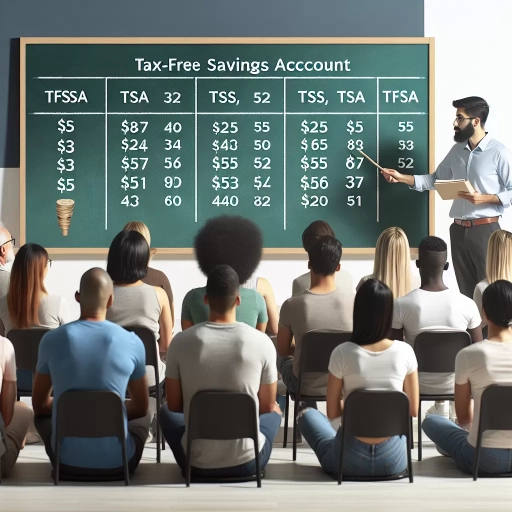How Many Tfsa Accounts Can I Have

Understanding TFSA: The Basics
What is TFSA?
A Tax-Free Savings Account (TFSA) is a type of investment account that provides significant benefits for people trying to save money. Established by the Canadian government in 2009, TFSA allows holders to contribute funds without the burden of taxes on earnings from investments within the account. This element of TFSAs offers a substantial advantage to savers, as gains from investments are free of tax even when withdrawn.
The Benefit of A TFSA
One of the main benefits of a TFSA is its flexibility. Unlike other savings or retirement accounts, where early withdrawals are often penalized, you can withdraw money from your TFSA anytime without the risk of losing a percentage through taxation. Moreover, the yearly contribution room in TFSA isn't lost when withdrawals occur. Instead, it is added to the next year's contribution room, making it suitable for both short-term or long-term investment purposes.
TFSA Contribution Limit
While TFSAs offer a tax-sheltered investment opportunity, there are certain limitations. The Canadian government sets a yearly contribution limit. As of 2021, the cumulative contribution room for those who were at least 18 in 2009 is $75,500. Any excess contribution attracts a penalty, which is charged monthly until removed or absorbed by new contribution room.
Multiple TFSA Accounts: Opportunities and Complexities
The Possibility of Having Multiple TFSAs
While there's a limit on the total amount you can contribute to a TFSA each year, there's no rule stating that all contributions must go into one single account. You can have multiple TFSA accounts with the same or different financial institutions. However, having multiple accounts doesn't increase your TFSA contribution limit.
Managing Multiple TFSA Accounts
While having multiple TFSAs can be beneficial, it also adds a layer of complexity to managing your finances. It becomes your responsibility to keep track of all contributions to ensure that your total contributions do not surpass the set limit regardless of the number of TFSAs you have. Failure to do so can result in over-contribution penalties.
Moving Money Between TFSA Accounts
If considering having multiple TFSAs, knowing how to move money between accounts is essential. You might think you can withdraw money from one TFSA and deposit it in another without consequence. However, if owning more than one TFSA, it's crucial to follow a 'qualifying transfer' or 'direct transfer' approach to avoid tax penalties associated with over-contribution.
Deciding How Many TFSAs to Have
When It Makes Sense to Have More Than One TFSA
There are numerous reasons why someone might choose to open more than one TFSA. For instance, one TFSA could be used for short-term savings goals while another could be an investment approach for long-term objectives. Furthermore, diversifying accounts across different institutions can provide access to different types of investments or better interest rates.
When One TFSA is Enough
For some, having one TFSA makes sense. Managing multiple accounts can be time-consuming and confusing, especially during tax season. Sticking to one TFSA account can simplify matters, help with the keeping track of your contribution limit, and be more beneficial for individuals with more straightforward savings or retirement plans.
Conclusion: Balancing Your Needs
Ultimately, the number of TFSAs suits your needs depends on your particular financial goals and how comfortable you are managing multiple accounts. Whether you decide to stick with one TFSA account or open several, remember, the most important part is utilizing these accounts effectively to achieve your financial objectives.